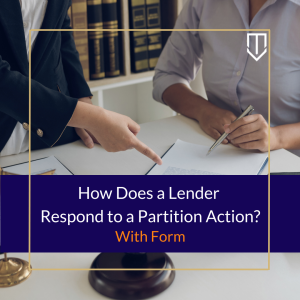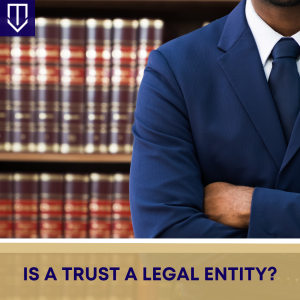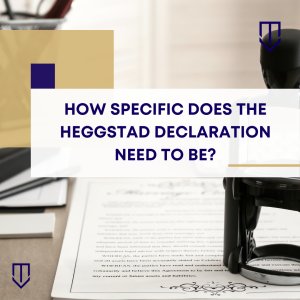 A declaration of non-monetary status is a special type of court filing reserved for trustees under a deed of trust. These trustees have limited powers, but are often named as defendants in lawsuits by plaintiffs seeking to ensure proper joinder.
A declaration of non-monetary status is a special type of court filing reserved for trustees under a deed of trust. These trustees have limited powers, but are often named as defendants in lawsuits by plaintiffs seeking to ensure proper joinder.
Of course, being named in a complaint carries with it several responsibilities, chief among these being that every defendant must issue a responsive pleading, such as an answer. For the trustee included purely as a precautionary measure, this is frustrating. Not only will they need to file an answer, which is both costly and time consuming, but they will also consistently be served with court documents in a case they have no interest in litigating.
To get around this hassle, trustees may file a declaration of non-monetary status, provided the relevant deed of trust is the “subject” of a lawsuit. Successfully filing this declaration means that the trustee no longer needs to participate in the lawsuit, provided the trustee also agrees to be bound by any court order relating to the subject deed of trust.
 California Partition Law Blog
California Partition Law Blog


 Civil Code section 2924 states that “every transfer of an interest in property, other than in trust, made only as a security for the performance of another act, is to be deemed a mortgage.” The “other than in trust” portion of the statute refers only to express trusts, however, because “under a deed of trust the trustee obtains none of the incidents of ownership, other than the right to convey upon default.” (Blair v. Blair (1941) 44 Cal.App.2d 140, 146.)
Civil Code section 2924 states that “every transfer of an interest in property, other than in trust, made only as a security for the performance of another act, is to be deemed a mortgage.” The “other than in trust” portion of the statute refers only to express trusts, however, because “under a deed of trust the trustee obtains none of the incidents of ownership, other than the right to convey upon default.” (Blair v. Blair (1941) 44 Cal.App.2d 140, 146.) “A trust is any arrangement which exists whereby property is transferred with an intention that it be held and administered by the transferee for the benefit of another.” (
“A trust is any arrangement which exists whereby property is transferred with an intention that it be held and administered by the transferee for the benefit of another.” ( Anytime a litigant wants to file a lawsuit, a threshold question is where the lawsuit should be filed. Specifically, the question is what county should get to hear the action. This process is called determining “venue,” and it can become quite a complicated endeavor. This is because the “correct” county for action will depend on a number of factors.
Anytime a litigant wants to file a lawsuit, a threshold question is where the lawsuit should be filed. Specifically, the question is what county should get to hear the action. This process is called determining “venue,” and it can become quite a complicated endeavor. This is because the “correct” county for action will depend on a number of factors.  When a loved one passes away, probate proceedings are hopefully not the first thing on their relatives’ minds. Probate is, however, an inevitability, even when a trust is present and effective. But inheritance is not always the blessing that the public conscious imagines it to be. The simple truth is that owning property in California is an expensive endeavor that carries with it tons of monetary responsibility. Faced with the possibility of inheriting something an individual simply cannot afford, there is an option: a disclaimer of interest.
When a loved one passes away, probate proceedings are hopefully not the first thing on their relatives’ minds. Probate is, however, an inevitability, even when a trust is present and effective. But inheritance is not always the blessing that the public conscious imagines it to be. The simple truth is that owning property in California is an expensive endeavor that carries with it tons of monetary responsibility. Faced with the possibility of inheriting something an individual simply cannot afford, there is an option: a disclaimer of interest.  A Heggstad petition is a unique legal maneuver in probate court that a party can use to establish the existence of a trust. Normally, if a party wants to show that the property at issue is in a family trust, they have to produce evidence of a transfer of the property into the trust. (Prob. Code § 15200 (b).) This is usually accomplished with a deed, which conveys the property from the owners (the “settlors”) to the trustees of the trust.
A Heggstad petition is a unique legal maneuver in probate court that a party can use to establish the existence of a trust. Normally, if a party wants to show that the property at issue is in a family trust, they have to produce evidence of a transfer of the property into the trust. (Prob. Code § 15200 (b).) This is usually accomplished with a deed, which conveys the property from the owners (the “settlors”) to the trustees of the trust.  A deed of trust is a commonly used mortgage document in California. Essentially, a deed of trust provides a lender with security for the repayment of the loan and effectively functions
A deed of trust is a commonly used mortgage document in California. Essentially, a deed of trust provides a lender with security for the repayment of the loan and effectively functions